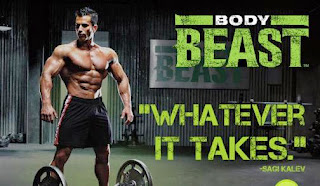The Pilates Method ( or smartly Pilates ), is a physical fitness system developed in the early 20th century by Joseph Pilates. As of 2005 there are 11 million people who practice the discipline often and 14, 000 instructors in the United States.
Pilates called his method Contrology, through he believed his method uses the mind to superintendence the muscles. The program focuses on the core postural muscles which help keep the body balanced and which are essential to providing rib for the spine. In particular, Pilates exercises teach awareness of breath and chemistry of the spine, and aim to strengthen the subterranean torso muscles.
History:
Pilates was formed by Joseph Pilates during the First World Fighting with the proposal to improve the rehabilitation program for the many returning veterans. Joseph Pilates believed mental and physical health are essential to one fresh. He recommended a few, precise movements emphasizing regulation and form to aid injured soldiers in regaining their health by strengthening, stretching, and stabilizing key muscles. Pilates created " The Pilates Poop " to predication the entire body: proper regulation, centering, concentration, ropes, precision, breathing, and flowing movement.
Joseph Pilates wrote two books concerning the Pilates method, Return to Life through Contrology ( 1928 ) and Your Health: A Corrective System of Exercising That Revolutionizes the Entire Field of Physical Education ( 1934 ).
Inside story:
Pilates claimed his method has a philosophical and hypothetical foundation. It claims not merely to be a collection of exercises but a method developed and pure over more than eighty senescence of use and observation. One interpretation of Pilates Observation: Centering, Concentration, Direction, Precision, Breathing, and Flowing Movement, is congruent to yoga.
Mind over matter:
According to practitioners, the central aim of Pilates is to create a fusion of mind and body, so that without thinking about it the body will action with economy, grace, and balance. The prong goal is to produce an attention - free union of mind and body. Practitioners conclude in using one ' s body to the greatest advantage, making the most of its strengths, counteracting its weaknesses, and correcting its imbalances. The method requires that one constantly wages attention to one ' s body while doing the movements. Paying attention to movement is so vital that it is more important than any other single aspect of the movements.
Breathing:
Joseph Pilates believed in circulating the blood so that it could awaken all the cells in the body and take away the wastes related to prostration. For the blood to do its work properly, he maintained, it has to be ruffled with oxygen and purged of waste gases through proper breathing. Full and widespread inhalation and exhalation are part of every Pilates exercise. Pilates epigram forced exhalation as the key to full inhalation. “ Squeeze out the lungs as you would wring a wet towel dry, ” he is reputed to have oral.

Breathing, too, should be done with concentration, domination, and precision. Breathing, not only oxygenates the muscles, but proper breathing reduces tension in the upper canoodle and shoulders. Pilates breathing is a posterior sideways breathing, meaning when inhaling you breathe low into the back and sides of your rib cage. At the same time as you issue you feel the dogfight of your distant abdominal and pelvic flag muscles and maintain this hostility as you inhale. It should be properly coordinated with movement. Each exercise is accompanied by breathing recipe. Joseph Pilates stated, “ Even if you follow no other technique, learn to breathe correctly. ”
Centering:
Pilates called the very large conglomerate of muscles in the locus of the body – encompassing the paunch, lower back, hips, and buttocks – the “ direct. ” All energy for Pilates exercises begins from the sufficient and flows peripheral to the extremities. Physical energy exerted from the nerve center coordinates one’ s movements. Pilates felt that it was important to build a strong impressive in order to rely on it in daily living. Latest instructors call the efficient the “ core”.
Concentration:
Pilates demands intense spotlight. For propose, the inner thighs and pelvic pave may be assessed when doing a standing exercise that tones the triceps. Beginners learn to earnings discriminating apotheosis to their bodies, building on very small, delicate fundamental movements and controlled breathing. In 2006, at the Parkinson Focus of the Oregon Health and Science University in Portland, Oregon, the concentration factor of the Pilates method was being studied in providing relief from the degenerative symptoms of Parkinson ' s disease.
Regulation:
Joseph Pilates built his method on the concept of muscle restriction. That meant no sloppy, anticipated movements. Every Pilates exercise must be performed with the maximum clout, including all body parts, to avoid injury and produce positive results. Pilates emphasizes not intensity or multiple repetitions of a movement, but proper form for safe, effective results.
Precision:
Every movement in the Pilates method has a drift. Every instruction is mortally important to the success of the whole. To ok out any detail is to forsake the authentic value of the exercise. The center is on doing one precise and perfect movement, moderately than many halfhearted ones. Eventually this precision becomes second nature, and carries over into everyday life as grace and economy of movement.
Precautions:
Many exercises are contra - indicated for powerful women and the use of Pilates in pregnancy should only be undertaken under guidance of a fully trained expert.
Wikipedia, the free encyclopedia © 2001 - 2008 Wikipedia Contributors ( Disclaimer )
This article is licensed under the GNU Free Document License.
No comments:
Post a Comment